Indian Economy
GST Council and National Anti-profiteering Authority
The GST Council in its recent meeting has discussed the proposal of extending the tenure of the National Anti-profiteering Authority (NAA) to one more year (till 30 November 2020).
- National Anti-profiteering Authority (NAA) came into existence ( just after the rollout of GST) for two years to deal with complaints by consumers against companies for not passing on GST rate cut benefits.
- Extension for NAA, (before its two-year sunset clause) is being seen necessary as there are many pending cases that need to be resolved before its dissolution.
National Anti-profiteering Authority
- The National Anti-Profiteering Authority (NAA) was constituted under Section 171 of the Central Goods and Services Tax Act, 2017.
Background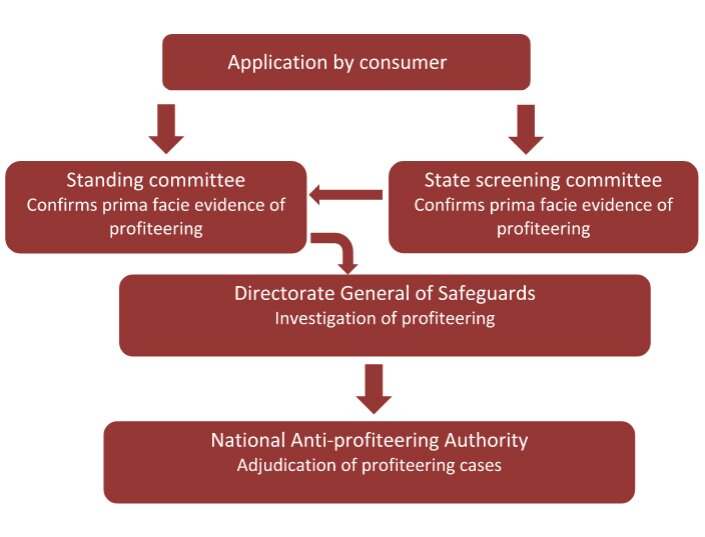
- The formation of NAA comes in the background of rate-reduction of a large number of items by GST Council which has made tremendous price reduction effect but the consumers will be benefited only if the traders are making the quick reduction of prices of respective items.
Functions of National Anti-profiteering Authority
- The anti-profiteering clause under the Goods And Services Tax (GST) Act mentions that any reduction in the rate of tax on any goods or services or the benefit of input tax credit must be passed on to the consumer by way of commensurate reduction in the prices of the respective goods or services.
- The Authority’s main function is to ensure that traders are not realizing an unfair profit by charging high price from consumers in the name of GST and to examine and check such profiteering activities and recommend punitive actions including the cancellation of Registration.
Governance
- NAA comprises of Chairman, four Technical members, a Standing Committee, Screening Committees in every State and the Directorate General of Safeguards in the Central Board of Excise & Customs (CBEC).
- The orders of the NAA can be appealed against only in the high court.
Indian Economy
Payment and Settlement Systems in India: Vision 2019–2021
The Reserve Bank of India (RBI) has released its statement on ‘Payment and Settlement Systems in India: Vision 2019–2021’, which outlines the measures needed to be undertaken to foster innovation, cybersecurity, financial inclusion, customer protection, and competition.
- The Payment Systems Vision 2021 envisages achieving a ‘highly digital’ and ‘cash-lite’ society through the goalposts of competition, cost-effectiveness, convenience, and confidence.
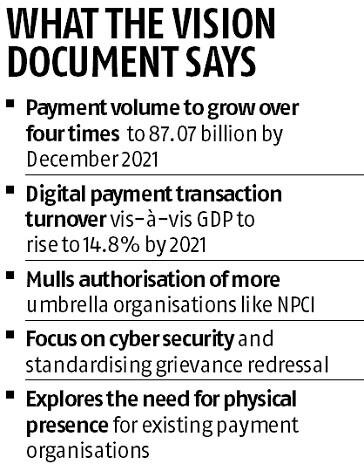
- The need for a self-regulatory organisation: for the digital payment space, which can serve as a two-way communication channel between the players and the regulator. The organisation will also work towards establishing minimum benchmarks, standards, and help discipline rogue behaviour.
- Potential gains: The number of digital transactions is expected to increase more than four times, from 20.69 billion in December 2018 to 87.07 billion in December 2021.
- The digital payment transaction turnover vis-à-vis gross domestic product (at current market prices) is expected to further increase to 10.37 per cent in 2019, 12.29 per cent in 2020, and 14.80 per cent in 2021.
- The RBI expects accelerated growth in individual retail electronic payment systems, both in terms of the number of transactions and increased availability.
- Payment systems like Unified Payments Interface (Immediate Payment Service) are likely to register average annualised growth of over 100 per cent and National Electronic Funds Transfer at 40 per cent over the vision period.
- Measures to be taken:
- The RBI will take measures to increase the penetration of acceptance infrastructure in the country.
- The infrastructure will be upscaled to at least six times the present levels in the next three years’ time.
- In order to have a coordinated approach towards regulation, the RBI shall engage with the other sectoral regulators like Securities and Exchange Board of India, Insurance Regulatory and Development Authority, Telecom Regulatory Authority of India, etc to remove friction in regulation and ease system operator and customer comfort.
- It will also consider the implementation of e-mandates/standing instructions for retail payment systems, subject to customer protection and adequate safeguards like authenticating payment instrument registration, mandating transaction limits, segments, etc.
Cash-lite economy
- It is an economy whereby there is a reduction in the high usage/volume of cash in circulation, thereby encouraging the use of electronic payment channels and reducing the cost of cash production and transportation.
- A Cash-lite society is a Society where most of the purchases of goods or services are made by credit card or electronic funds transfer rather than with cash or cheques, it is an environment where the money is spent without being physically carried from one person to the other.
Unified Payments Interface (UPI)
- It is a system that powers multiple bank accounts into a single mobile application (of any participating bank), merging several banking features, seamless fund routing & merchant payments into one hood.
- It also caters to the “Peer to Peer” collect request which can be scheduled and paid as per requirement and convenience.
National Electronic Funds Transfer (NEFT)
- It is an electronic funds transfer system maintained by the Reserve Bank of India (RBI). it was started in November 2005, the setup was established and maintained by the Institute for Development and Research in Banking Technology.
- NEFT enables bank customers in India to transfer funds between any two NEFT-enabled bank accounts on a one-to-one basis. It is done via electronic messages.
- Unlike Real-time gross settlement, fund transfers through the NEFT system do not occur on a real-time basis. NEFT settles fund transfers in half-hourly batches with 23 settlements occurring between 8:00 AM and 7:00 PM on weekdays and the 1st, 3rd and 5th Saturday of the calendar month.
- Transfers initiated outside this time period are settled at the next available window. No settlements are made on the second and fourth Saturday of the month, or on Sundays, or on public holidays.
Science & Technology
Selenium-Graphene based Catalyst in Fuel Cell
A multi-institutional team of scientists from India has developed a selenium-graphene–based catalyst which is more efficient in terms of cost and performance. It also remains stable for longer than the usual platinum-based catalysts.
- Modern energy technology, for example, fuel cells which are used commercially in hydrogen fuel–based cars, require good catalysts that are efficient as well as cost-effective.
- Normally, fuel cells use expensive elements like platinum. These expensive metal-based technologies perform excellently for initial few cycles, but then get degraded in performance due to many reasons:
- Graphene modified with selenium atoms in very low amounts can perform like platinum in a demonstrated reaction.
- The oxygen reduction reaction is a key step in the functioning of the fuel cell. Graphene by itself is a “poor” catalyst of this reaction. It involves the reduction of oxygen in two steps, each of which consumes two electrons. This is not very useful either for fuel cells or metal-air batteries.
- Neither selenium nor graphene are useful by themselves, the combination of both works efficiently.
- Poisoning-resistant: Methanol fuel cells, a common form of fuel cell used, suffer from a “poisoning” effect. It is found that the catalyst that is developed has a high tolerance for poisoning.
Poisoning effect
- This is a part of the process where the methanol reaches the negative electrode and coats it, the electrode becomes ineffective after some cycles. This is especially problematic when expensive catalysts like platinum are used.
Selenium
- Selenium is a non-metallic chemical element, member of the group XVI of the periodic table. In chemical activity and physical properties, it resembles sulfur and tellurium.
- Selenium has good photovoltaic and photoconductive properties, and it is used extensively in electronics, such as photocells, light meters and solar cells.
Graphene: it is a one-atom-thick layer of carbon atoms arranged in a hexagonal lattice. It is the building-block of Graphite (which is used, among other things, in pencil tips).
- Graphene is the thinnest material known to man at one atom thick, and also incredibly strong - about 200 times stronger than steel.
- It is an excellent conductor of heat and electricity and has interesting light absorption abilities.
Fuel cell
- Fuel cells are electrochemical devices that convert chemical energy from the reactants directly into electricity and heat.
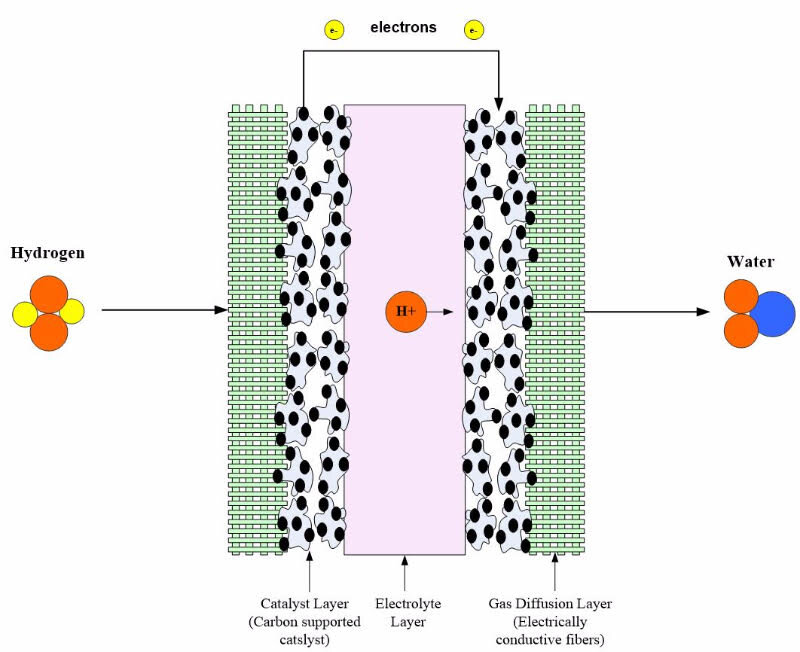
- The device consists of an electrolyte layer in contact with a porous anode and cathode on either side.
- In a standard fuel cell, gaseous fuels are fed continuously to the anode (negative electrode), while an oxidant (oxygen from the air) is fed continuously to the cathode (positive electrode). Electrochemical reactions take place at the electrodes to produce an electric current.
- Advantages of fuel cell systems are:
- High operating efficiency is not a function of system size.
- A highly scalable design.
- Several types of potential fuel sources are available.
- Zero or near-zero greenhouse emissions.
- There are no moving parts in the fuel cell stack, which provides reliable, vibration-free operation.
- Nearly instantaneous recharge capability when compared to batteries.
- Limitations of fuel cell systems are:
- Cost-effective, mass-produced pure hydrogen storage and delivery technology.
- Fuel Reformation technology may need to be considered if pure fuel is not used.
- Fuel cell performance may gradually decrease over time due to catalyst degradation and electrolyte poisoning if pure fuel is not used.
- Comparison of the fuel cell with Battery
- The lifetime of a primary battery is limited due to the following:
- The battery stops producing electricity when the chemical reactants stored in a battery runs out.
- When a battery is not being used, a very slow electrochemical reaction takes place that limits the lifetime of the battery.
- The battery life is dependent on the lifetime of the electrode.
- Advantage: A fuel cell is an energy conversion device where the reactants are supplied. The fuels are stored outside the fuel cell. A fuel cell can supply electrical energy as long as fuel and oxidant are supplied. Also, no “leakage” occurs in a fuel cell, and no corrosion of cell components occurs when the system is not in use.
- The lifetime of a primary battery is limited due to the following:
- Comparison of the fuel cell with Heat Engine
- A heat engine also converts chemical energy into electric energy, but through intermediate steps. The chemical energy is first converted into thermal energy through combustion. Thermal energy is then converted into mechanical energy by the heat engine; and Finally, the mechanical energy is converted into electric energy by an electric generator.
- The process also involves moving parts, which implies that they wear over time. Regular maintenance of moving components is required for proper operation of the mechanical components.
- Advantage: Since fuel cells do not have any moving parts during operation, they are more reliable than heat engines and have less noise. This results in lower maintenance costs, which make them especially advantageous for space and underwater missions.
- The efficiency of fuel cells is not strongly dependent on operating power. It is their inherently high efficiency that makes fuel cells an excellent option for a broad range of applications, including automobiles, buses, distributed electricity, and portable systems.
Internal Security
Asia Media Summit
16th Asia Media Summit 2019 was organized in Siem Reap province, Cambodia to deliberate on issues pertaining to media & broadcasting industry.
- 16th Asia Media Summit held under the topic “Media Digitalization Focusing on Developing Markets”, was organized by the Cambodian Ministry of Information in collaboration with the Asia-Pacific Institute for Broadcasting Development (AIBD).
- The summit has addressed concerns caused by digital media, which requires relevant authorities to make regulations to anti-cybercrimes, fake news, and training people to raise awareness and enhance the media profession.
Asia Media Summit
- Asia Media Summit is the annual conference organized by Asia-Pacific Institute for Broadcasting Development (AIBD) in collaboration with its partners and international organizations.
- The Conference is attended by Decision makers, media professionals, scholars, and stakeholders of news and programming from Asia, Pacific, Africa, Europe, Middle East, and North America.
- Asia Media Summit provides a unique opportunity for broadcasters in the region to share their thoughts on Broadcasting and Information and is supported by all regional and International Broadcasting Unions and Associations.
About AIBD:
- The Asia-Pacific Institute for Broadcasting Development (AIBD) was established in 1977 under the auspices of UNESCO.
- AIBD is a unique regional inter-governmental organization servicing countries of the United Nations Economic and Social Commission for Asia and the Pacific (UN-ESCAP) in the field of electronic media development.
- Its secretariat is situated in Kuala Lumpur and is hosted by the Government of Malaysia.
Objective:
- The AIBD is mandated to achieve a vibrant and cohesive electronic media environment in the Asia-Pacific region through policy and resource development.
Founding Members:
- The International Telecommunication Union (ITU), the United Nations Development Programme (UNDP), and the United Nations Educational, Scientific Cultural Organisation (UNESCO) and The Asia-Pacific Broadcasting Union (ABU) are founding organizations of the Institute and they are non-voting members of the General Conference.
Full membership:
- Broadcasters from 26 countries in the Asia Pacific region including India are full members of the organization.
- India was elected as President of the Asia-Pacific Institute for Broadcasting Development (AIBD) in 2018 for the duration of two years.
Biodiversity & Environment
G20 and Marine Plastic Waste
The Group of 20 (G20) environment ministers, on 15th June, 2019, agreed to adopt a new implementation framework for actions to tackle the issue of marine plastic waste on a global scale.
- The environment and the energy ministers of the G20 major economies met in Karuizawa, northwest of Tokyo, ahead of the G20 summit in Osaka, Japan on 28th-29th June, 2019.
- The new framework is aimed at facilitating further concrete action on marine waste, though on a voluntary basis, after the G20 Hamburg Summit in Germany adopted the G20 Action Plan on Marine Litter in 2017.
- Under the new framework, G20 members will promote a comprehensive life-cycle approach to prevent and reduce plastic litter discharge to the oceans through various measures and international cooperation.
- The members will also share best practices, promote innovation and boost scientific monitoring and analytical methodologies.
- Japan may host the first meeting under the new framework at the time when officials of environment ministers in the G20 countries will meet for the G20 Resource Efficiency Dialogue.
The G20 Summit
- The G20 Summit is formally known as the Summit on Financial Markets and the World Economy.
- The host country of the G20 summit leads the group over the course of one year from December through the following November as the G20 presidency.
- The G20 presidency also organizes relevant ministerial and working group meetings.
- It is the first time that Japan has taken on the G20 presidency.
- Over the years, the G20 summits have focused not only on macroeconomy and trade, but also on a wide range of global issues which have an immense impact on the global economy, such as development, climate change and energy, health, counter-terrorism, as well as migration and refugees.
- The G20 is a group of 19 countries (Argentina, Australia, Brazil, Canada, China, France, Germany, India, Indonesia, Italy, Japan, Republic of Korea, Mexico, Russia, Saudi Arabia, South Africa, Turkey, the United Kingdom, the United States) and the European Union.
The G20 Action Plan on Marine Litter
It includes seven high level policy principles:
- Promote the socio-economic benefits of establishing policies to prevent marine litter.
- Promote waste prevention and resource efficiency.
- Promote sustainable waste management.
- Promote effective wastewater treatment and storm water management.
- Raise awareness, promote education and research.
- Support removal and remediation activity.
- Strengthen the engagement of stakeholders.
The G20 Resource Efficiency Dialogue
- The G20 countries decided to establish a G20 Resource Efficiency Dialogue at the summit in Hamburg in 2017.
- The dialogue makes the efficient and sustainable use of natural resources a core element of the G20 talks.
Important Facts For Prelims
Spitzer Space Telescope
After nearly 16 years of exploring the cosmos in infrared light, NASA's Spitzer Space Telescope will be switched off permanently on 30th January, 2020.
- The Spitzer Space Telescope is the final mission in NASA's Great Observatories Program - a family of four space-based observatories, each observing the Universe in a different kind of light.
- The other missions in the program include the visible-light Hubble Space Telescope (HST), Compton Gamma-Ray Observatory (CGRO), and the Chandra X-Ray Observatory (CXO).
- The Spitzer Space Telescope was launched in the year 2003. It is a space-borne, cryogenically-cooled infrared observatory capable of studying objects ranging from the Solar System to the distant reaches of the Universe.
- It captures infrared light, which is often emitted by 'warm' objects that are not quite hot enough to radiate visible light.
- The telescope revealed a new ring around the planet Saturn. In 2017, the telescope also revealed the presence of seven rocky planets around the TRAPPIST-1 star.
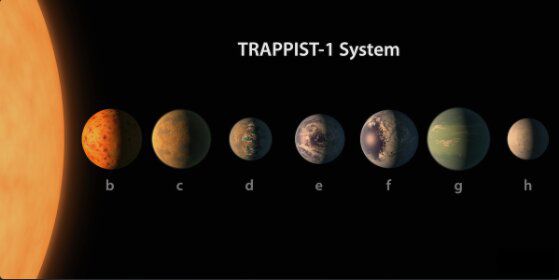
- TRAPPIST-1 is a planetary system, located 12 parsecs away from the Solar system (39 light years), and is 12 times less massive than the Sun and only slightly larger than the planet Jupiter. There are at least seven planets orbiting the star.
- NASA's James Webb Space Telescope, set to launch in 2021, will study the universe in many of the same wave-lengths observed by the Spitzer.
Important Facts For Prelims
Temples and Turtle Conservation
Conservation program for turtles is being implemented in Assam by involving the network of temples across the State.
- Species that have disappeared in the wild are bred in Assam’s shrines before being released into the wild.
- A certain degree of faith attached to turtles along with the involvement of the local community has helped them survive in temple ponds.
- However, the temple ponds have more turtles than they can sustain and lack egg laying space because of so-called beautification of these ponds with concrete boundary.
- Besides, temple turtles are fed non-natural food such as bread and wheat balls, which alters their biology.
- India hosts 28 species of turtles, of which 20 are found in Assam.
- Major threats are consumption of turtle meat and eggs, silt mining, encroachment of wetlands and changes in flooding patterns.
- Few important turtle species are:
Important Facts For Prelims
“Operation Sunrise 2”
“Operation Sunrise 2” is a coordinated operation by armies of India and Myanmar. It is a three-week-long operation carried out in their respective border areas, targeting several militant groups operating in Manipur, Nagaland and Assam.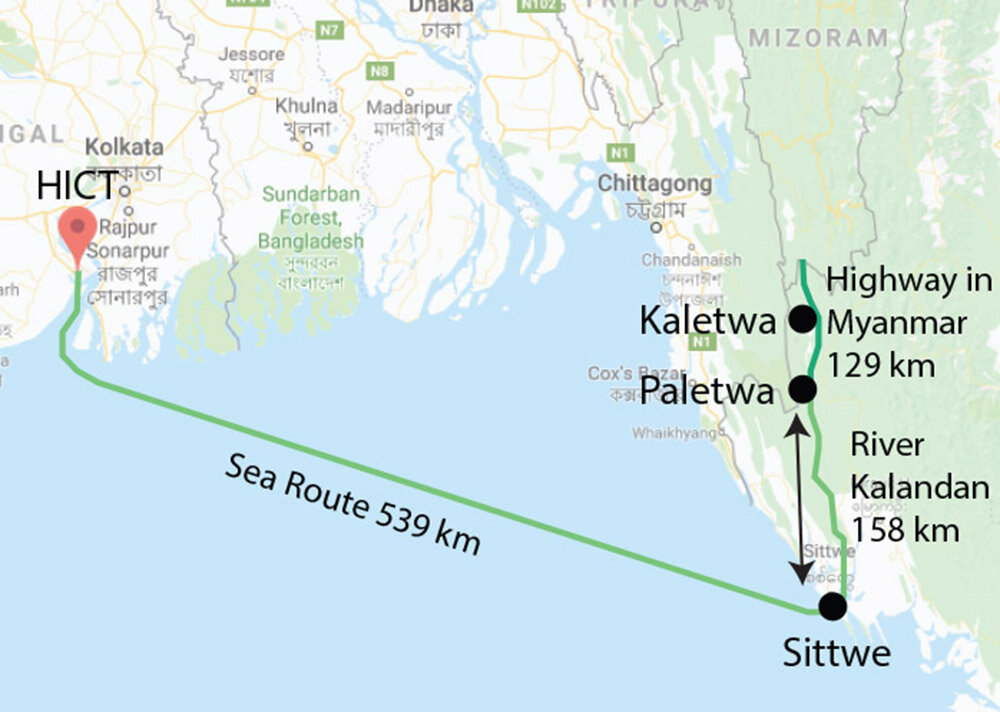
- The first phase of “Operation Sunrise” was conducted three months ago along the Indo-Myanmar border, during which, the Indian Army targeted members of the Arakan Army, an insurgent group in Myanmar, who were opposed to the Kaladan multi-modal transit transport project. The project is viewed as India’s gateway to Southeast Asia.
- In “Operation Sunrise 2”, the armies coordinated with each other to bust camps of militant outfits, including the Kamtapur Liberation Organisation, the National Socialist Council of Nagaland(Khaplang), the United Liberation Front of Assam (I) and the National Democratic Front of Boroland.
- Myanmar is one of the strategic neighbours of India and shares a 1,640-km border with a number of north-eastern states, including the militancy-hit Nagaland and Manipur.




